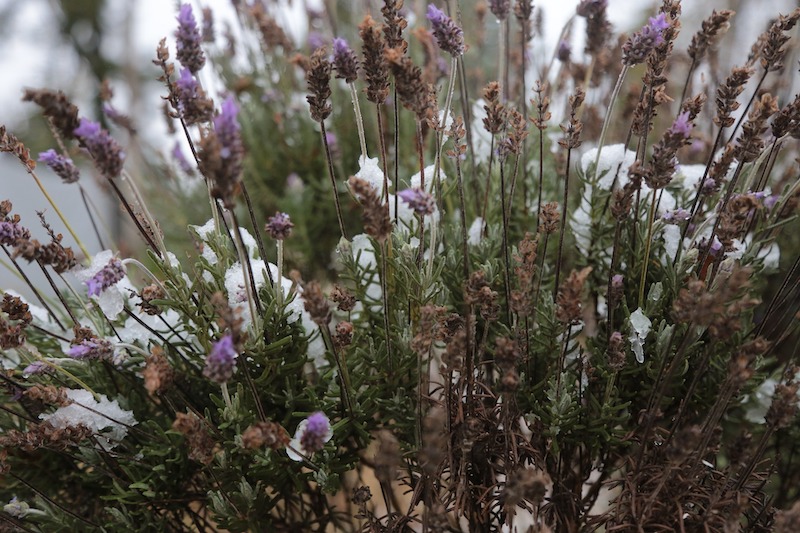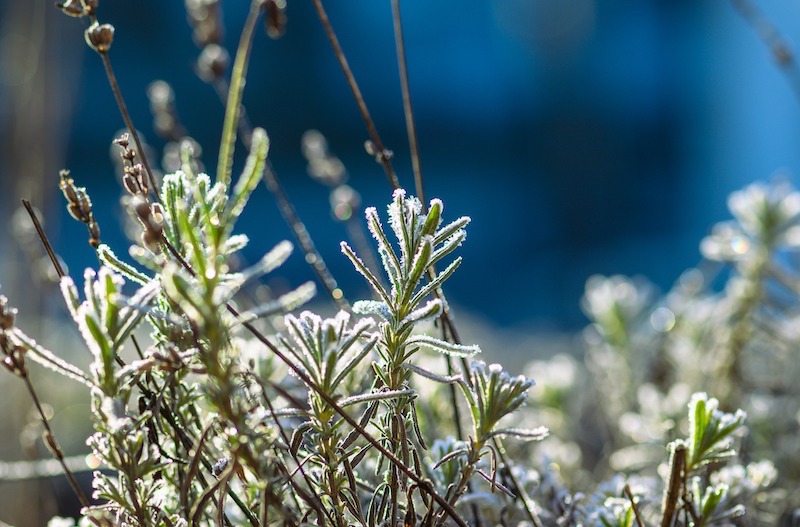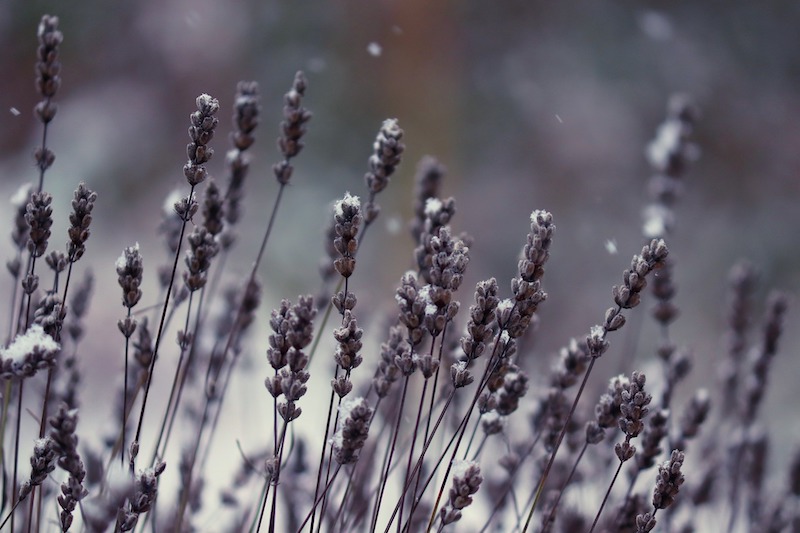As temperatures drop and daylight gets shorter, it’s time to give your lavender plants extra care before winter arrives. Depending on what US Hardiness Zone you live in, the steps for winter care can vary. In addition, the variety of lavender you have and whether it is grown in a pot will play a role.

Protecting Lavender in Winter
English lavender (Lavandula angustifolia), is among one of the most cold-hardy cultivars. Select a variety that will survive your winter temperature range. Spanish Lavender is best grown in Southern regions, and French cultivars may need added winter protection. Young plants under 4 years old will benefit from additional winter protection, particularly from freezing winds if they are in open areas.
You can use a frost cloth, burlap, or an old lightweight blanket to provide extra protection from freezing winds. Use rocks, bricks, or any heavy item to hold down the perimeter of the fabric so it doesn’t blow off. Adding a layer of natural mulch around the root zone such as shredded leaves, straw or wood chips can also be beneficial in harsh winter climates; be sure to pull mulch away from the main stem to maintain good air circulation. Wait until the first hard frost before you cover your lavender plants; this will signal to the plant it's going into dormancy. Also, wait until the evening temperatures are consistently dropping into the mid-twenties before applying a frost cover.

Cutting Back Lavender For Winter
All pruning for lavender varieties should be done immediately after blooming. To prune, take a small handful of the dried flower stems, reach down into the plant, and snip where the foliage is full, cutting off roughly 1/3 of the plant's height. Be careful not to cut into the woody stem. Repeat this step around your lavender plant to create a nice, rounded shape. Yearly pruning will result in fuller growth the following spring. Winter pruning is not recommended.

Lavender Winter Care in Pots
English Lavender is more cold hardy than other varieties and often tolerates low temperatures down to Zone 5. If you live in a milder climate, you can move your potted lavender to a more protected location, such as a porch or patio. A garage or shed with windows can also be an overwintering option in cold climates. You can also sink the potted lavender in the ground to insulate the roots and protect the pot from cracking during freeze-thaw cycles. Alternatively, bring the potted lavender indoors if you live at the colder end of its growing range. Keep it in a cool location near a sunny window, and water when the soil is completely dry; avoid placing the pot near a heating vent.
Watering Lavender in Winter
It isn’t necessary to water lavender during its winter dormancy when planted in the landscape. You can give lavender a deep soak in the fall, but otherwise, lavender will do fine without supplementary watering in winter.
Growing Lavender Indoors
Lavender requires a cold period to naturally go into its winter dormancy, so it does not grow well indoors. Lavender is best suited and grown as a landscape/garden plant.
Steps To Care For Lavender in Winter
Give your lavender plant a deep soak in the fall, and then cut back watering altogether. Wait until the first hard frost to provide extra protection for lavender plants, as temperatures drop, it signals Lavender to enter into full dormancy. In cold growing zones or in a windy, unprotected location, cover the plant with either frost fabric, burlap, or an old lightweight blanket, and hold down the edges with gardening staples or rocks. Apply a layer of natural mulch such as bark, shredded leaves, or straw before securing the frost fabric.
Step 1 - Stop watering after the first frost
Step 2 - Apply a layer of mulch in late fall
Step 3 - When nighttime temperatures are consistently in the mid-20s, apply a frost cover around the plant for extra protection.
 |
Author Chris Link - Published 01-20-2023 |
